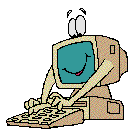
On Monday, Comenius West Midlands held its Primary Languages Conference at the Novotel in Wolverhampton. Sandwiched between keynotes by Joe Brown from CILT that involved song rhyme and lots of action, and Steven Fawkes from ALL who thrilled us with his ‘Banane‘, delegates had to choose sessions from a range including :
- It’s magic!
- International Perspective
- Let’s play – Language games and activities for the playground.
- Numeracy through Languages
- Animation
- Italian for the Primary classroom – a cross curricular approach.
- Music and songs in the Primary classroom
- Animation in the languages classroom (double session)
- Creative use of ICT
A tricky choice for many, judging from the feedback at the end of the day! I for one will be emailing presenters for notes from their sessions as I was presenting and missed out on all of the sessions!
Actually, I didn’t completely miss out as I was able to attend the plenaries and also began the day by acting as ‘roadie’ for Oscar Stringer as he presented a whistle stop double session on animation from idea through planning, modelling, filming, adding finishing touches and publishing. Phew! In a very short time (less that two hours), the participants made short films in French and Spanish which can be viewed below and on his NING network. Just shows what you can do in a short time with good instruction, imagination and a bit of plasticine. ;o)
Find more videos like this on Animation For Education
Definitely inspired me! So much so that, after a quick chat with Oscar, I decided to have a go with my Year 4 class this week. More of that in a later post!
My session was entitled Creative use of ICT and centred on the use of some tools that i thnk are useful to enhance and enable PLL.
The idea had been to introduce delegates to Voki, Voicethread, Audacity and Photostory, explain how I’ve used them in my classroom, and then let delegates have a go at using one of the tools. I’d prepared notes for people that went into everyone’s pack so those who couldn’t attend were able to benefit too, and these pointed to online tutorials for the tools as well as examples from my experience and research. I’d also requested a laptop between two to be provided with a microphone and Internet access, and Audacity and Photostory3 uploaded ready. I’d prepared a Voicethread and Voki account for the day so all outcomes could be saved together for future reference, and I’d also added some examples to get people started.
Best laid plans and all! There were three laptops provided, the speakers didn’t work, and Internet access was at best infuriatingly slow and at worst non-existent (at 20€ per laptop, I hope the orgnisers got a refund!) Anyhow, it left me rather embarrassed as my examples took an age to load (Voki) or didn’t play sound (Voicethread AND Voki at times) – next tie I’ll save them for offline access using Camtasia or similar – and I’ve found that there is a facility on Voicethread now to save for offline access.
However, I did manage to highlight the use of del.icio.us which i hadn’t intended to mention but proved to be one of the most popular ideas with delegates. My account of how I use Audacity led to lots of smiles and there was a general hum of interest as I made a Photostory in three minutes.
I must say was a little disheartened by the first session, especially as I had to repeat it after lunch, but several people came up to me and seemed to be buzzing about something I’d shared, so I went into the repeat feeling a little more confident, especially as I was prepared for the problems this time! The make up of the group was different this time and they asked lots of questions – I think they were the G&T group ;o)
At the end of the afternoon when the evaluations were returned, I was rather surprised, and very pleased as well!- to read several who said things like
“Brilliant session on ICT – can you do a whole session on Voicethread and podcasting next time please?”
“the notes were so useful – I’m going to check them out on del.icio.us – and I’m going to tell my staff about it too”
If you want to have the notes, see below. and all the sites / references can be found on my del.icio.us account – http:del.icio.us/lisibo/june22
Creative uses of ICT in the PLL classroom – Get more College Essays






